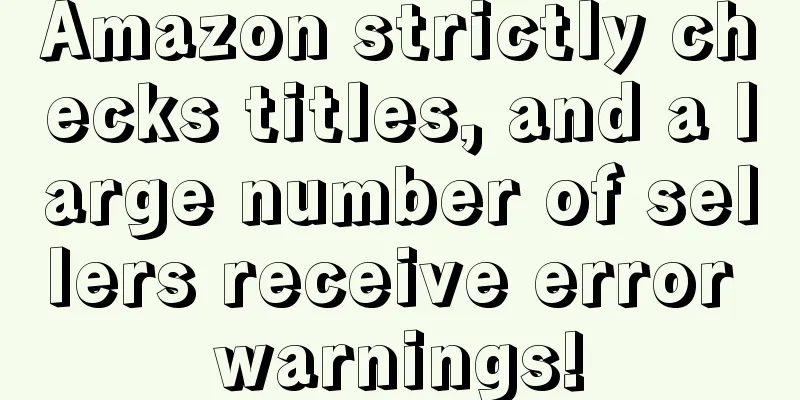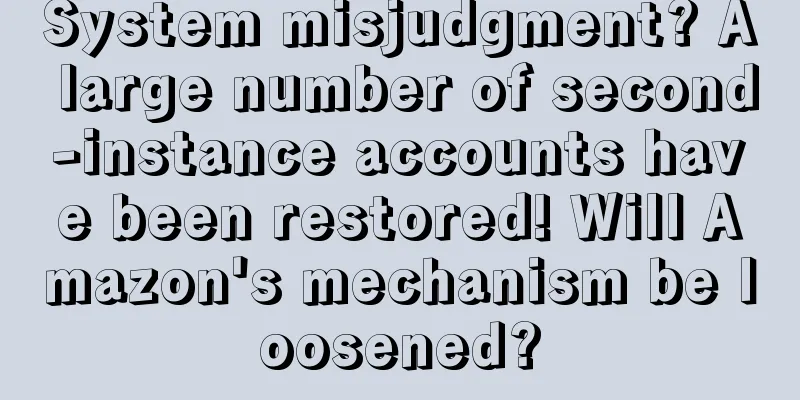Amazon strictly checks titles, and a large number of sellers receive error warnings!

|
For Amazon sellers, old links often carry a lot of hard work and expectations. With the weight of long-term accumulated sales, reviews, etc., they become an important guarantee for stable orders in the store.
Therefore, all sellers need to check the store backend as soon as possible to see if they have received relevant warnings. If similar problems are found, optimize the old link titles in time to avoid affecting the normal traffic and sales of the links. |
<<: Orders plummeted by 50%! The US's 20% tariff increase officially took effect!
>>: Amazon has a new feature! You can monitor and mark ASINs with high return rates
Recommend
After the store closures, do you really know the truth about the year-end bonuses for cross-border workers in 2021?
There are only 3 days left until 2022, and workers...
What is EPROLO? EPROLO Review
EPROLO is a free one-stop cross-border dropshippin...
Americans' year-end online shopping demand exceeds the peak of the epidemic! Amazon is still the first choice!
It is learned that after more than two years of sl...
The orders did not explode, but the ACOs exploded first? This year's Prime Day is full of crises
We just reported on the initial battle yesterday....
Why do advertising orders always account for a high proportion? Here’s the reason…
🤔 My dear friends, have you ever encountered the ...
What is MyOnlineStore? MyOnlineStore Review
MyOnlineStore can help you quickly create an onlin...
US retail sales increased 7.2% year-on-year in April! Demand for jewelry and luxury goods increased!
<span data-shimo-docs="[[20,"获悉,根据万事达卡Spen...
Analysis of traffic sources inside and outside Amazon!
I believe everyone knows the importance of traffic...
What is a Shopee order? Shopee Order Review
Introduction to the status of Shopee orders and th...
Collection | Share the practical tutorial of creating a shipment without warehouse division (detailed steps)
Share the practical tutorial of creating a shipmen...
What is Xiamen Hexin? Xiamen Hexin Review
Xiamen Hexin E-commerce Co., Ltd. (formerly known ...
What is Squarespace? Squarespace Review
Squarespace is an online tool that is used to buil...
What is ICOLO? ICOLO Review
ICOLO is a SaaS system that provides one-stop serv...
Check in seconds whether Amazon's competitors have S-order phenomenon
As an Amazon seller, you should not only pay atte...
What is Qicheng e-commerce? Qicheng e-commerce review
Guangdong Qicheng E-commerce Co., Ltd. is committe...









